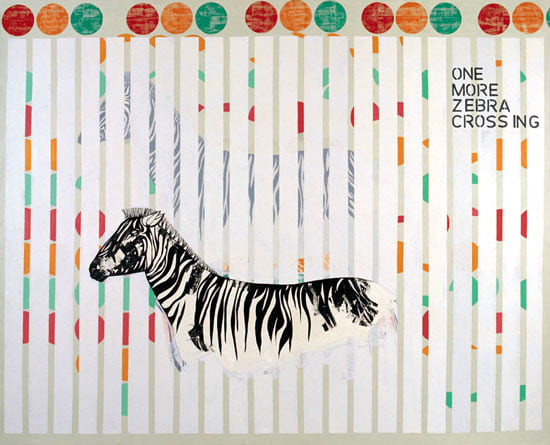
Artist Anjum Singh’s work, says Bharati Chaturvedi, uses waste, including aluminium, acrylic, commonplace industrial materials, to build up a dynamic, organic urbanscape.
Trees, brutally lopped, stand like humbled prisoners of war, about to be shot in a bloody end. They have been constructed from aluminum with automotive paint, and acrylic, commonplace industrial materials made from ores mined from deep earth.
They stand on dark Astroturf that glistens like the silver flecks of a black granite tombstone. This mélange of symbols builds up into the remains of a funeral, and we find ourselves in a crypt. Here, two leftovers of artist Anjum Singh’s city of residence — Delhi — are enshrined.
One, trees. Cut to make way for more people to travel wider distances quicker. The other, materials — acrylic, once created in Delhi’s many industrial zones. Many of these factories are now shut down, replaced by service centers, in anticipation of modernity.
This crypt, called ‘Minim’ is just one marker of Delhi. In fact, together with other works in Anjum Singh’s new show, All That Glitters is Litter, it is one of several micro-ecologies that jointly built up to the dynamic organic urbanscape.
But the works also reach beyond spatial mapping, allowing the array of materials to simultaneously indicate the tensile quality of new global urbanity; fiber glass, shiny oblong magnets, acrylic, steel — these are the fabrics cities everywhere are draped in, in their buildings and in their trash.
The show’s title works more than hints at this transformation. Here, a pile of trash, predominantly newspaper, glistens in its painstakingly crafted acrylic avatar. To do this, Anjum has worked with specialists who have been able to apply industrial skills to cutting-edge artwork with panache. The ubiquitous neighborhood trash pile is transparent but the folds and crushes render it largely opaque. On the edges, an editorial is visible, drowned out by the tender pages, all shining in a deceptively cheery manner.
Why does everything that glitters have to be litter? Is it because that is exactly what Shining India sheds? Or is it valuable because it has been sorted out from the rest of the trash and kept aside? In her previous works,
Anjum has examined new waste regimes, intended to upgrade essential services in contemporary cities. Now, she addresses the value being created from trash, the alchemy of the entrepreneurial city that transforms it from unwanted to desirable. Colour strikes out from between this heap, like a shot of plastic in a vast landfill. Perhaps it will end up inside a foraging cow, the living and the inert intermingling. These are the subliminal boundaries that Anjum seeks out, where unlikely meetings materialize. Cows and Plastics, Trees and Roads, The Expanding City and the Limited Vision for it.
Frequently, there is an impending crash as multiple systems set out on their converging trajectories. Such a sense of anticipation mingled with a deep embracing of the quirky urban, ripples across the works in the show.
If some of these are somber-isms, Anjum counters them with her playful use of materials and space concepts, creating an edgy game that viewers must play along with. In Spit and Spat, two paintings take off on the unselfconscious act of making the world a personal spittoon.
The offerings of hundreds of spitters dot the city, but it is unclear what their journey is like. Did they flow into the blue river, its occasional cellular structure in the painting indicative of a reserved seat for every blob? The story can be completed in many ways.
A sculpture-like everything uses acrylic, bringing a buoyancy and texture to the timbre. More complex materials come together in one of the finest works in the show, Buzz. It draws from an easily recognizable New Delhi image — giant beehives bulging from the exterior corners of older buildings and occasionally, trees. Stone and concrete, ironically, provide a home to such creatures in an inhospitable city. These hives are created by letting magnets cling onto a honeycomb iron armature, manufactured locally, by hand. The magnets have been made in China.
Anjum bought them from a toy retailer in Old Delhi, a packed, lively, traditional center of trade. This flow of materials unleashes a compelling narrative of the microcosms we inhabit and their strange embeddedness in a constantly shifting world. Here, distance, proximity, labor, new sites of activity are all held together in the neat, polished form of an industrious worker bee. It is a powerful metaphor for the hard labor that still propels cities everywhere.
But Anjum’s engagement with the urban landscape isn’t about cities as much as it is about the idea of the quotidian — her quotidian. It is as much about clashes over public space and dominance as about sensibilities and the smaller traditions that we are a part of, even if we fight some of them off constantly.
-Bharati Chaturvedi